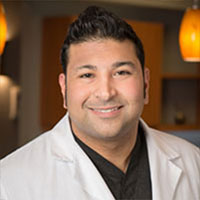Why Do What We Do
WHY I USE MY ROTARY FILES ONLY ONE TIME
 - DR. JAY GUPANA
- DR. JAY GUPANA
With the introduction of rotary instrumentation to the field of Endodontics, the efficiency of root canal treatment has improved dramatically. Research in the design and materials used in rotary files is constantly improving the way these instruments perform - making them a pricey commodity in the root canal armamentarium. To cut cost, the re-use of these instruments is common practice despite the recommendation that they are single-use instruments only.
Studies have shown that sterilizing these instruments requires a four step process that does not result in complete sterilization. This may result in transfer of infected material or disease from patient to patient via the contaminated files.
Overuse of rotary endodontic files decreases the cutting efficiency and causes cyclic fatigue of the instrument. Fatigue of these instruments can result in complications such as fracture of files within the tooth. Removal of these files will require additional treatment and time to effectively disinfect the root canal system.
For these reasons, we use new sets of files for each patient. Once treatment is complete, the files are disposed of in the appropriate manner. This reduces the incidence of cross-contamination and treatment complications. With the implementation of single-use files in our everyday practice, we are providing the highest quality care for each of our patients.
WHY I DO ENDODONTIC TREATMENTS IN 2 VISITS.
 - DR. ANEEL BELANI
- DR. ANEEL BELANI
Historically, it has been understood that the success and failure of Endodontic is a result of the removal or reduction of bacteria. If we want to provide successful Endodontic therapy we must make sure that we kill the bacteria within the tooth to the best of our ability. Dentists understand that bacterial removal is a multifaceted process that relies not only on the mechanical instrumentation of the root canal walls but also on the antibacterial properties of our medicaments.
Endodontic literature has shown that the ability to kill bacteria is dependent on how long our antibacterial agents are in contact with the tooth. If we are to finish root canal treatment in one appointment, we are only able to use our disinfectants for the time that the patient is in the chair. Thus, we place calcium hydroxide (an antibacterial paste) into the canal after cleaning and disinfecting the canals. This antibacterial paste stays within the tooth for a period of 1-3 weeks and continues killing bacteria. By doing this we can reach a higher level of certainty that we are killing endodontic pathogens.
This idea has come into much discussion over the last 10 years. It seems to me that the unspoken argument for doing the root canal in one visit is that it is financially beneficial to the dentist/Endodontist due to the reduction in chair time and material costs. This has never been a factor in our treatment planning decisions in our office, which I believe is a reason that many of the dentists in the area trust us with their own teeth and those of their family members.
WHY I FIND USING CBCT IS IMPORTANT FOR THE BEST ENDODONTIC DIAGNOSIS AND OUTCOMES.
 - DR. THIKI BERTRAND
- DR. THIKI BERTRAND
3D imaging has markedly improved the accuracy of endodontic diagnosis and outcomes of root canal treatment. Conventional X-rays are two-dimensional images that can create a distorted representation of the actual root shape and its canal anatomy.
I always use CBCT to aid in decisions related to cases requiring re-treatment. CBCT can determine the existence of a missed canal or entire root! Missed canals are a substantial reason for a failed root canals and CBCT allows me to visualize and treat these canals. CBCT can also help in extraction vs. RCT decisions by allowing me to locate perforations and root fractures. In these cases, I can confidently inform patients when extraction may be a better long term option for them.
I also use CBCT to help visualize cases with uncommon tooth anatomy such as bifurcated premolars, c-shaped canals and splits in the canals. Accurate knowledge of the precise anatomy of a tooth before performing the RCT improves the long term success of treatment in teeth with aberrant anatomy.
CBCT is great at locating the extent of external and internal resorptive defects. Understanding the extent of these defects helps in determining if extraction or RCT is the best course of action. This way we do not extract teeth that can be saved and we do not recommend treatment when it is will likely fail.
Finally, CBCT can be helpful in trauma cases by accurately showing the extent of tooth displacement, vertical or horizontal root fractures, as well as any bony structure fractures. Depending on the location and extent of these displacements or fractures I can make informed decisions regarding patient treatment. All the reasons contribute to the recognition of CBCT as a very important adjunct in Endodontics and ultimately has lead to improved quality and success of endodontic treatment.


